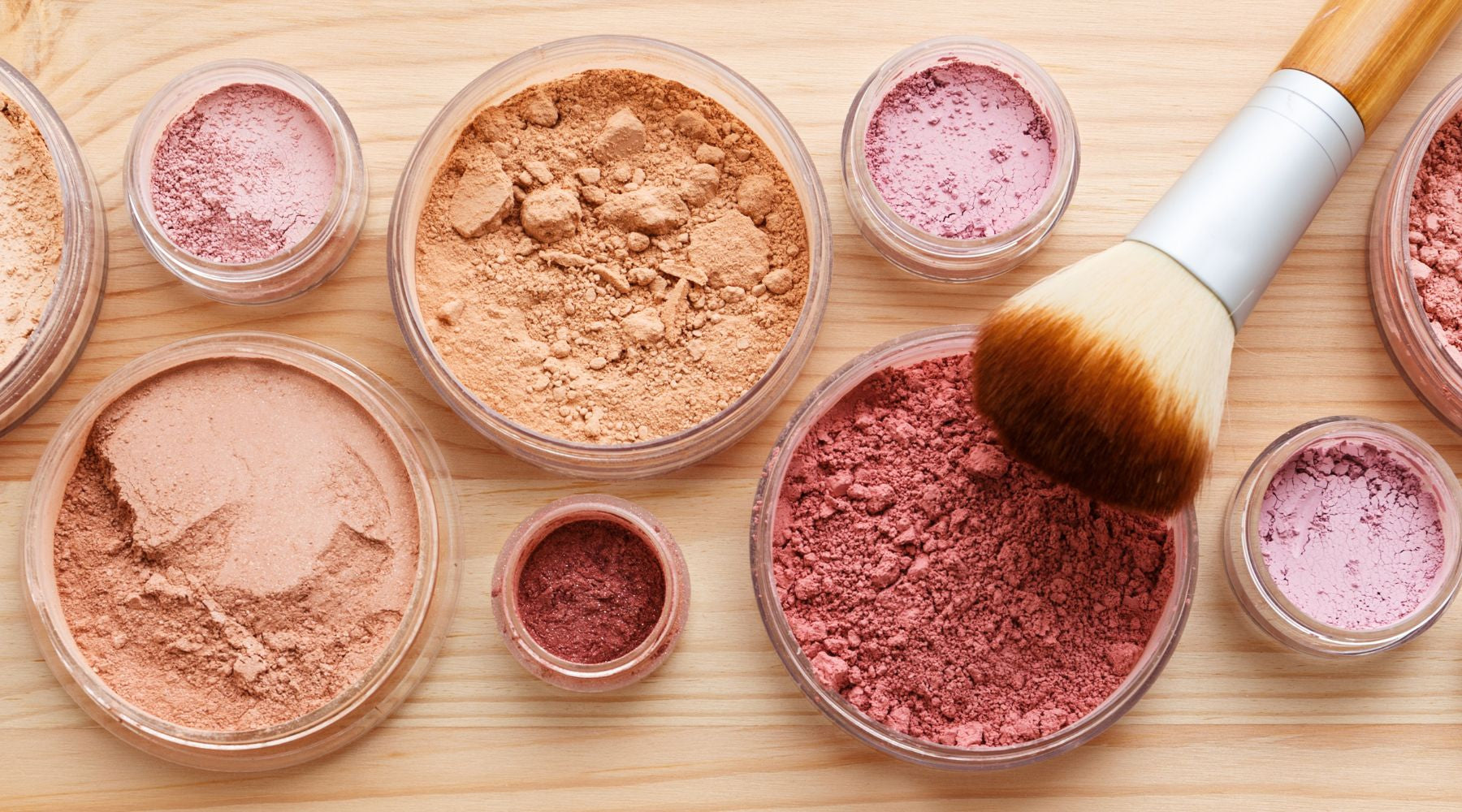If you've switched to using mineral-based makeup or natural makeup, chances are you've heard of the unfortunate side effects of the ingredient Bismuth.
Bismuth is a heavy metal element that is often used in cosmetics as a pigment, filler, or preservative. While bismuth is considered safe for many individuals, it can pose risks and adverse effects for certain people, which is why many natural makeup companies, such as ours, never uses it in formulation.
Why is Bismuth Used in Cosmetics?
Bismuth oxychloride (how you'll normally see bismuth written on an ingredient label) is a pearlescent and shimmery compound derived from bismuth. It is used in cosmetics, especially in mineral makeup, to provide a luminous and glowing effect. Bismuth oxychloride is often used in foundations, blushes, eyeshadows, and highlighters.
(It's also use in that pink stuff you drink and other pharmaceuticals when your stomach isn't doing so great.)
Many cosmetic companies use this cheap filler ingredient and label their powder foundations as “mineral makeup” because it is a natural compound and believe it to be better for your skin than Talc (a whole other issue). It’s added to cosmetics because it has that silky feel, gives the white, pearly-shimmer, and makes makeup last longer. It adds light and reflective properties to the product to help “hide” wrinkles and age spots.
Though all of its properties sounds great, it can pose some very harmful effects to the skin and your body.
What are the Risks of Using Bismuth in Cosmetics?
- Skin Irritation & Sensitivity: One of the primary concerns associated with bismuth in cosmetics is its potential to cause skin irritation and sensitivity. Some individuals may experience itching, redness, rashes, or even acne-like breakouts when using products containing bismuth. This adverse reaction is more common in those with sensitive or reactive skin.
- Clogged Pores & Aggrevated Acne: Bismuth particles are larger and have a unique structure that can sit on the surface of the skin. This can lead to clogged pores, trapped bacteria, dirt, and sebum. Consequently, individuals with acne-prone skin may experience worsened breakouts or increased frequency of acne flare-ups when using cosmetics containing bismuth.
- Allergic Reactions: In some cases, bismuth can trigger allergic reactions in susceptible individuals. These reactions can range from mild symptoms such as itching and hives to more severe manifestations like swelling, difficulty breathing, or anaphylaxis. If you have a known allergy to bismuth or related metals, it is crucial to avoid cosmetics that contain this ingredient.
- Skin Discomfort & Sensations: Some individuals may report feelings of heat, tingling, or discomfort when using cosmetics with bismuth. This sensation is often referred to as the "bismuth oxychloride itch." While not harmful in itself, it can be uncomfortable and bothersome for those who experience it.
- Environmental Impact: Apart from potential risks to human health, the presence of bismuth in cosmetics also raises concerns about its environmental impact. The mining and extraction of bismuth can have detrimental effects on ecosystems, including soil contamination, water pollution, and disruption of natural habitats. Additionally, improper disposal of bismuth-containing cosmetics can contribute to environmental pollution.
What Safer Ingredient is Used in Place of Bismuth?
To get the same lustrous, silky, luminescent finish that bismuth provides in cosmetics without all the harmful effects, we use ethically-sourced sericite mica, a natural mineral found in the Earth that is safe to use.


